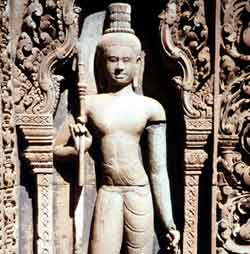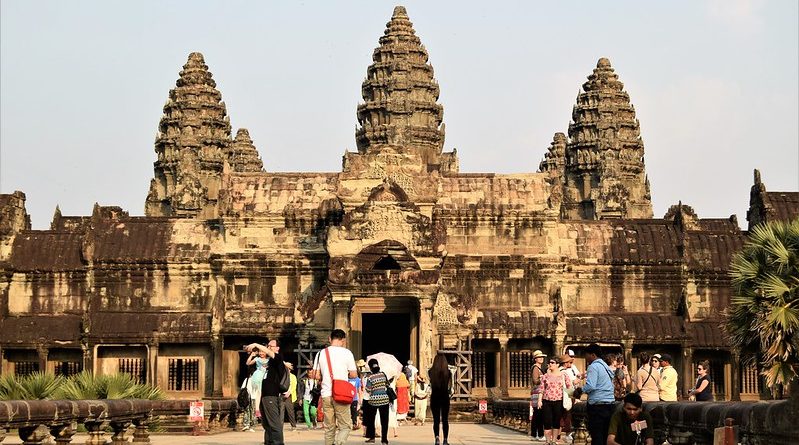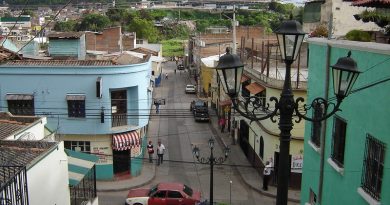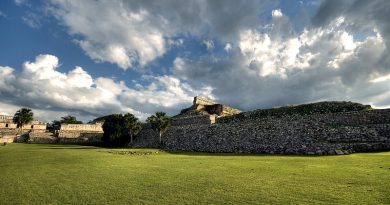The Eighth Wonder of the World: Angkor Wat
History Facts
Where: Angkor, Cambodia, southeast Asia
When: Originally built in the 9th Century
History: The largest religious site in the world, with an awe inspiring devotion to Hinduism
Top Sights: Angor Wat Temple and the eeries Pyramid Temple
Remember to Bring: Torch if you are exploring the site after dark
Where It’s At
The main attraction for visitors to Cambodia is undoubtedly Angkor and the Angkor Wat temple complex. Angkor Wat literally means ‘city of temples’, and it is the biggest religious structure in the world. Billed as the eighth wonder of the world, it was built in the 12th century and is now one of the most enduring architectural achievements in the world. Shrouded in legend and mystery, this once lost city boasts 1000 archaeological sites and covers an area of 170 square miles.
 During French Colonial rule, peasants alluded to the discovery of “a place built by giants” but the practical minded French casually dismissed their stories as simple folklore. It was not until the discovery of Angkor by French adventurer Henri Mahout in 1860 that this lost city revealed its inner beauty to the world.
During French Colonial rule, peasants alluded to the discovery of “a place built by giants” but the practical minded French casually dismissed their stories as simple folklore. It was not until the discovery of Angkor by French adventurer Henri Mahout in 1860 that this lost city revealed its inner beauty to the world.
What’s the history here?
For several centuries, Angkor controlled the greater part of Southeast Asia, inhabiting over one million people in its prime. Even though Cambodia is mostly Buddhist today, the ideas of the Hindu religion served as the foundation for the building of Angkor. The evidence of this religious influence can be seen today in both the stone god carvings and the layout of the temples themselves mimicking that of the Hindu universe. Over 100 temples of Angkor were commissioned over the years by successive kings and are the only buildings that remain of the lost city today.
Angkor was built by the Angkorian god kings who ruled the region for more than 500 years, from 802AD to the mid-1300s. Spanning 81 hectares, the vast complex incorporated more than 60 temples and had five main towers, which are now depicted on the Cambodian flag. The towers are thought to have represented the five peaks of Mount Meru, the home of the Hindu gods and the temples were encircled by moats, which represented the ocean surrounding the mountain.
King Suryavarman II, who reigned from 1113 to 1152, was responsible for the Temple of Angkor Wat, a huge pyramid shaped structure which was dedicated to the Hindu God Vishnu. The Temple contained some of the most beautiful examples of Khmer and Hindu art, though sadly it has been repeatedly ransacked throughout history and artifacts are still circulating on the illegal international art market.
By the mid-15th century, Angkor had been abandoned. Phnom Penh became the new capital and the site crumbled into obscurity until its ‘discovery’ in 1860. The cause of Angkor Wat was taken up by the French, who invested 40 years of technical expertise in preventing further deterioration of the site, however, their grand plans were halted first by the Khmer Rouge guerrillas, who occupied the site and used it as a munitions dump for the duration of the civil war, and later by the Vietnamese.
 Restoration work was resumed in 1986, and these days thousands of pilgrims and tourists flock to the religious centre every year. Siamese Buddhist monks still occupy part of Angkor, and their presence has been a major factor in the preservation of the site. In 1992 Angkor Wat was declared a UNESCO World Heritage site.
Restoration work was resumed in 1986, and these days thousands of pilgrims and tourists flock to the religious centre every year. Siamese Buddhist monks still occupy part of Angkor, and their presence has been a major factor in the preservation of the site. In 1992 Angkor Wat was declared a UNESCO World Heritage site.
What’s there to see and do?
The city of Angkor Thom covers an area of 7 square miles and is encircled by a moat. The most important monuments, the Bayon, the Baphuon, the Royal Enclosure, Phimeanakas and the Terrace of the elephants, are located at the centre of the city.
You could spend all day at this temple alone but it is worth venturing out to see the other equally impressive temples such as Ta Prohm and The Bayon. Ta Prohm ranks alongside Angkor Wat as one of the most popular attractions at Angkor. It has been deliberately (and controversially) neglected by preservationalists and looks rather like the entire complex must have appeared to the French explorers of the 19th century: overgrown, devoured by the jungle foliage and steeped in mystery.
The magnificent Angkor Wat temple is undisputedly the highlight of any visit to Angkor. Facing west in the direction of death, its primary function was once thought to have been as a tomb. It’s a fantastic place from which to view the sunset, and the famous bas reliefs and decorative embellishments continue to elicit wonder, even on repeat visits.
Travellers tips
– In order not to be completely wiped out by the end of the day, hire a bike and ride throughout the luscious landscape, stopping at places that seem interesting and generally taking in the stunning views.
– A day pass to Angkor will set you back $20 US and the best way to avoid the throngs of tourist buses is to arrive early and find your way to the side entrance.
– Take a torch with you if you plan to go for sunrise or sunset. Climbing or descending the steep, uneven temple steps in the dark can prove to be quite tricky!
More Information
Cambodian Cyber Culture
official website of Cambodia. This site deals with issues related to Cambodia and Cambodians.
Angor Wat Org
Site dedicated tothe largest religious monument in the world
BOOKS
Angkor Wat: Time, Space, and Kingship,Eleanor Mannikka; Published 2000, University of Hawaii Press
Order this book from Amazon.com
By Jess Halliday




